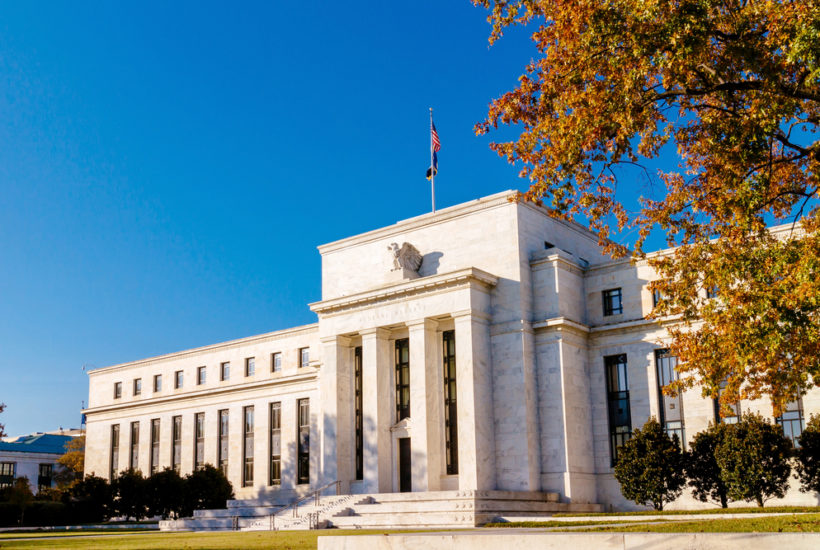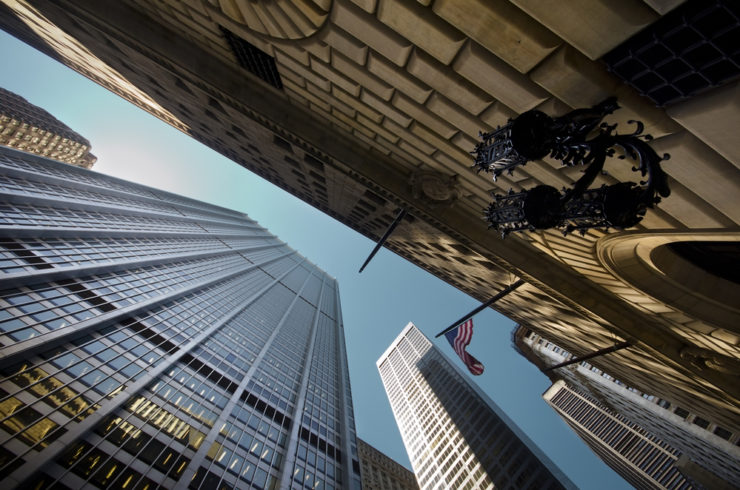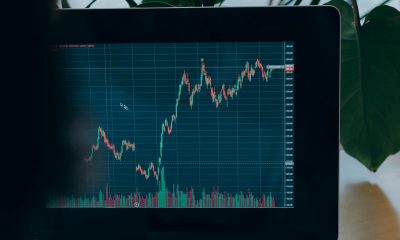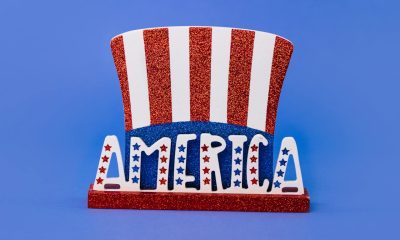Featured
The Fed is running out of time—and conventional weapons
The buy and hold mantra from Wall Street bankers should have died decades ago. After all, just buying stocks has gotten you absolutely crushed in China for more than a decade.

In Japan, you have been buried under an avalanche of losses for the last three decades. And even in the good old USA, you wouldn’t want to only own stocks if the economy was about to enter another deflationary recession/depression like 2008. Likewise, you wouldn’t want to own any bonds at all in a high-inflation environment as we had during the ’70s.
The Fed has gone from claiming in late 2018 that it would hike rates another four times, to now saying that it is open to actually start cutting rates very soon.
My friend John Rubino who runs the show at DollarCollapse recently noted: “bad debts are everywhere, from emerging market dollar-denominated bonds to Italian sovereign debt, Chinese shadow banks, US subprime auto loans, and US student loans. All are teetering on the edge.” I would add that the banking system of Europe is insolvent—look no further than Deutsche Bank with its massive derivatives book, which is the 15th largest bank in the world and 4th biggest in Europe. Its stock was trading at $150 pre-crisis, but it has now crashed to a record low $6.90 today. If this bank fails, look for it to take down multiple banks around the globe.
The US is in bad shape, and there is little doubt about it, but the nucleus of the next crisis does not have to emanate from America. I find it incredible that so many people ignore the “melting down nuclear reactors” around the world. China’s factory data shows that the nation’s manufacturing sector is now contracting. China’s National Bureau of Statistics released official manufacturing PMI for the month of May, which fell to 49.4 from 50.1 in April. South Korean GDP shrank in Q1 by 0.4%. In case you were not aware, South Korea and copper prices both have PhDs in the global economy. Copper for its use in construction and Korea for its production of semiconductors. Both are highly sensitive to economic activity, and both are crashing.
Here is one example as to why the Fed is so deathly afraid of a recession. Wisdom Tree and Factset did a study on Zombie companies. They are defined as those with current trailing 12-month interest expenses that exceed the average of the past three years of earnings before interest and taxes. That number is now just under 23%, which is much higher than the 13% rate that what was evident in 2007 just prior to the Great Recession.
To put this in perspective, nearly 1/4 of firms in the Russell 2000 don’t even make enough money to service their debt much less pay back the debt. As economic growth begins to slow sharply, interest rates on high yield debt will start to rise, and zombie companies will get shut out of the credit market. If they cannot service the debt, they go bankrupt and close the doors.
As these companies lay off their workforce, the economy will slow further, and that will push junk bond yields higher. This will cause more companies to go belly up and increase the unemployment rolls creating a death spiral of debt defaults, rising unemployment and crashing junk bond prices (soaring yields). A recession/depression would be virtually guaranteed given the record amount of corporate debt– there’s $5.4T worth BBB, junk & leveraged loans outstanding compared to $1.5 trillion subprime mortgages in 2007.
This means the EPS on the S&P 500 may not be anywhere close to the ridiculous $186 projected for 2020. Don’t forget; S&P 500 earnings dropped by over 80% in the last recession. Crashing EPS will most definitely pop the equity bubble, and stock prices should fall more than 50%. There will also be a rising strain on government transfer payments (welfare, unemployment, food stamps), which will cause deficits to explode well north of $2 trillion per annum.
Now let’s discuss the yield curve. Yes, it does matter, and no, it’s not different this time. The spread that most matters in the world of the yield curve is the 10year minus Fed funds. This is because of something called negative carry. The current spread between the 10year and Fed Funds Rate is minus 30bps. If shadow banks were to borrow money overnight to invest in longer-duration assets, they would be losing money on each trade.
Hence, they stop borrowing; causing money supply growth to dry up quickly. At that point, banks’ profits and the economy contract at a faster pace. In reality, it doesn’t matter why the curve inverts; the effect is the same. So don’t believe the perma-bulls when they tell you the curve has inverted for technical reasons and therefore it is different this time. It matters a lot– especially to the Fed.
The Fed funds futures market is now pricing in 3-4 rate cuts over the next 12 months. It is the market that tells the Fed when it is time to cut rates because of the inverted yield curve. The Fed’s comparable minuscule intellectual capacity has no possible ability to compete with the market’s collective wisdom about where the economy is heading. That’s why we don’t need a central bank at all, especially one that has inserted itself into markets to such a degree that it has now supplanted them entirely.
The salient question is will the coming rate cut(s) be enough to pull the US out of its march towards recession and does it also save China, Japan, Korea and the rest of the maimed global economies around the globe? And, does it also rescue the European banking system as well? The answer is no. What the global economy really needs to perpetuate the growth illusion is a resolution to all the trade wars, along with rate cuts and another massive QE to re-inflate faltering asset prices.

In conclusion, here is a recent quote from Fed chair Powell, offering more evidence that the Fed— and every other central bank on the planet—are simply slaves to the stock market and headed firmly down the path towards creating a condition of global stagflation:
“Perhaps it is time to retire the term ‘unconventional’ when referring to tools that were used in the crisis. We know that tools like these are likely to be needed in some form in future Effective Lower Bound (ELB) spells, which we hope will be rare.”
“ELB” spells are central bank speak for when rates are brought down to zero percent and stay there for a decade they will need to not openly go back into QE, but then even find new ways to get a massive amount of money directly into the hands of consumers.
Therefore, the Fed will be forced to once again try to bail out the economy and stock market later this year. However, it only has 225 bps of easing left before the ELB is reached. It is most probable that the Fed is already too late and also does not have enough conventional weapons to stave off a depression in markets and the economy. That is why before too long, we will have to deal with unconventional weapons of Universal Basic Income, Helicopter Money, and Negative Nominal Interest Rates.
The chances of this leading to a viable solution to markets and the economy is less than the level of where the Fed Funds Rate will end up..which looks destined to be headed somewhere south of zero.
(Featured image by DepositPhotos)
—
DISCLAIMER: This article expresses my own ideas and opinions. Any information I have shared are from sources that I believe to be reliable and accurate. I did not receive any financial compensation for writing this post, nor do I own any shares in any company I’ve mentioned. I encourage any reader to do their own diligent research first before making any investment decisions.

-

 Africa2 weeks ago
Africa2 weeks agoOil Dependence and Economic Resilience: Morocco’s Path to Sustainable Growth
-

 Africa7 days ago
Africa7 days agoBantuHub and L’Archer Group Partner to Invest €1 Million in Congolese Startups
-

 Markets2 weeks ago
Markets2 weeks ago2025 Chaos, Concentration, and the Road to 2026
-

 Business2 days ago
Business2 days agoThe TopRanked.io Weekly Digest: What’s Hot in Affiliate Marketing [Super Partners Review]
























